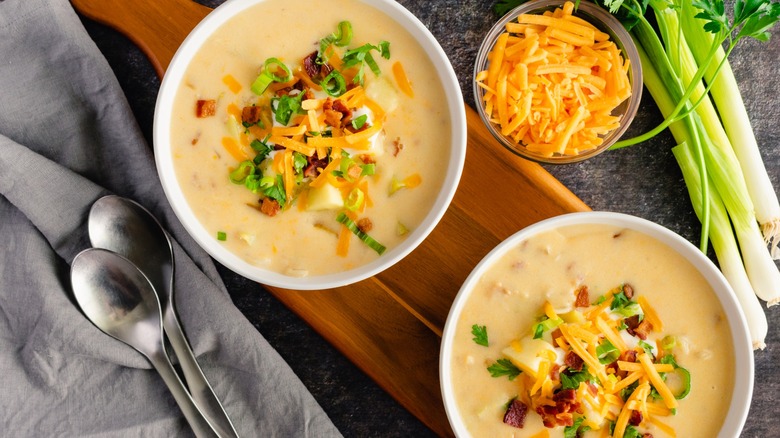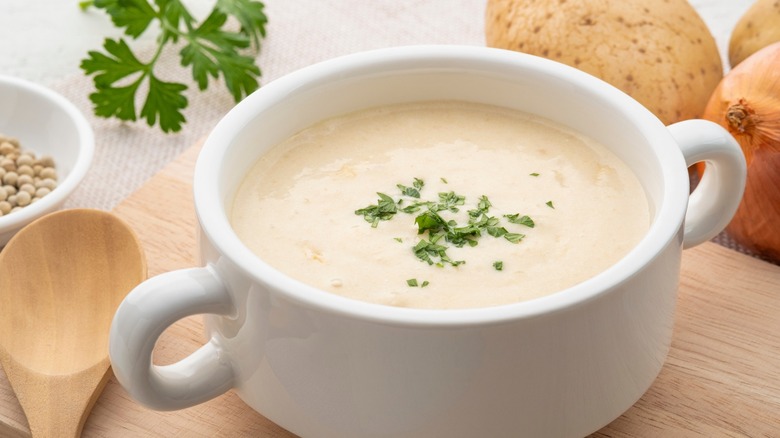How To Prevent Dairy Ingredients From Curdling In Potato Soup
Potato soup is simple, hearty, and comforting, whether it's a nutritionally dense cauliflower potato soup or delectable caldo de queso. Many variants of potato soup call for at least one dairy ingredient to enhance the soup's flavor and mouthfeel, but like any creamy soup, this poses one problem — the potential for curdling. Understanding how best to prevent this dairy conundrum is essential to ensuring smooth texture and optimal flavor.
When milk-based products such as cream, milk, yogurt, buttermilk, and sour cream are too quickly exposed to hot temperatures — in this case, 180 degrees Fahrenheit or more — curdling occurs. This sudden heat causes the protein in the dairy to separate from the water, which leads to the unappetizing curdled lumps.
For any dairy-based soup, the conventional wisdom to prevent curdling is to simmer it well below the boiling point. While the same can work for potato soup, the starches from the spuds naturally act as a binder to hold dairy's emulsion, staving off the dreaded curdles. Of course, it's all a delicate balancing act and a lot depends on specific factors, like the type of potatoes, if they're pureed or chunky, the form the dairy comes in, and when it's added.
Techniques for adding dairy to potato soup to stop curdling in its tracks
To keep dairy ingredients from curdling, cook your soup on low-to-medium heat, stir frequently, watch for any signals that it's nearing the boiling point, and lower your temperature as needed. The greater the fat content of your dairy product, the less risk there is of your dairy seizing, as the additional fat acts as a kind of insulation. Next come the starches, a cream-based soup's best friend. Whether you employ a wheat flour-based roux, potato starch (in the form of blended potatoes or added dry starch), or cornstarch, each can help to stabilize finicky dairy and stave off curdling.
Also, when you add dairy to your soup may be just as important as cooking temperature when it comes to keeping curds from forming. That's because the longer dairy cooks, the greater the chance it has of overheating and breaking. To avoid this dreaded curdle-maker, add your dairy to the soup last, tempering it with a little hot soup broth whisked into the milk or cream before it's added.
To be certain your dairy won't separate, you can combine some or all of these tips, simmering your soup low-and-slow before making a slurry of starch and full-fat dairy, adding a cup of soup, whisked all together, before mixing it back into your soup pot. The results will be rich, silken potato soup without the pesky lumps that vexed Miss Muffet so.

